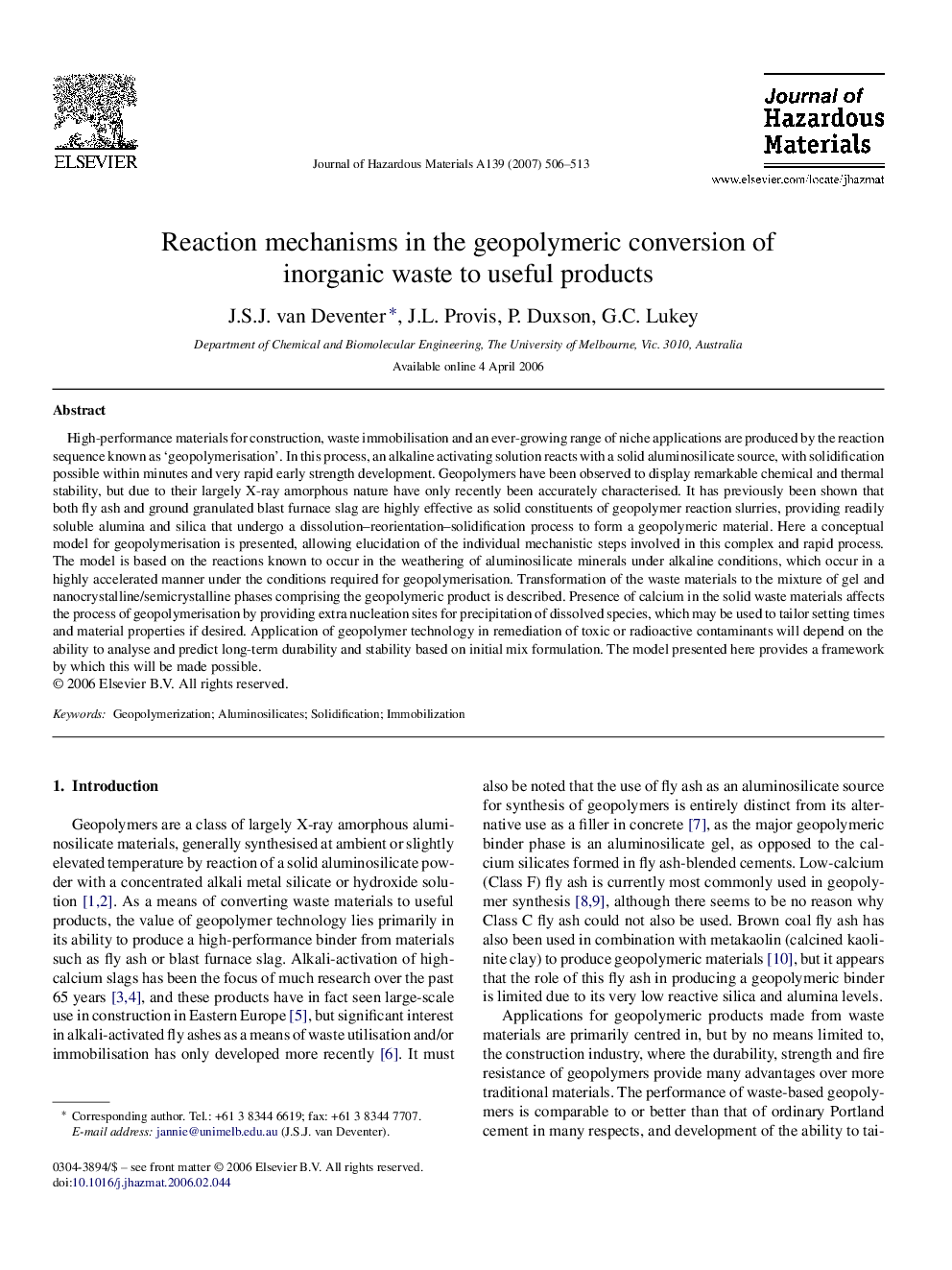| Article ID | Journal | Published Year | Pages | File Type |
|---|---|---|---|---|
| 584969 | Journal of Hazardous Materials | 2007 | 8 Pages |
Abstract
High-performance materials for construction, waste immobilisation and an ever-growing range of niche applications are produced by the reaction sequence known as 'geopolymerisation'. In this process, an alkaline activating solution reacts with a solid aluminosilicate source, with solidification possible within minutes and very rapid early strength development. Geopolymers have been observed to display remarkable chemical and thermal stability, but due to their largely X-ray amorphous nature have only recently been accurately characterised. It has previously been shown that both fly ash and ground granulated blast furnace slag are highly effective as solid constituents of geopolymer reaction slurries, providing readily soluble alumina and silica that undergo a dissolution-reorientation-solidification process to form a geopolymeric material. Here a conceptual model for geopolymerisation is presented, allowing elucidation of the individual mechanistic steps involved in this complex and rapid process. The model is based on the reactions known to occur in the weathering of aluminosilicate minerals under alkaline conditions, which occur in a highly accelerated manner under the conditions required for geopolymerisation. Transformation of the waste materials to the mixture of gel and nanocrystalline/semicrystalline phases comprising the geopolymeric product is described. Presence of calcium in the solid waste materials affects the process of geopolymerisation by providing extra nucleation sites for precipitation of dissolved species, which may be used to tailor setting times and material properties if desired. Application of geopolymer technology in remediation of toxic or radioactive contaminants will depend on the ability to analyse and predict long-term durability and stability based on initial mix formulation. The model presented here provides a framework by which this will be made possible.
Related Topics
Physical Sciences and Engineering
Chemical Engineering
Chemical Health and Safety
Authors
J.S.J. van Deventer, J.L. Provis, P. Duxson, G.C. Lukey,
